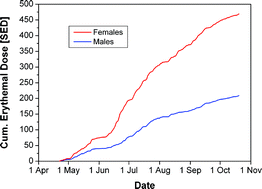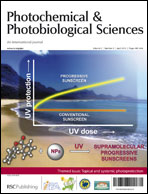Since the nineteen fifties the attitude of the fair-skinned world population towards the sun has changed dramatically. Tanned skin, which before was regarded as the stigma of the underprivileged working classes, became fashionable and desirable. The science of photoprotection primarily focuses on ultraviolet exposure during leisure time activities, whereas ultraviolet radiation is still underestimated as a risk factor for UV-induced skin and eye problems. The actual discussion on the registration of UV-induced skin tumours as occupational diseases, however, has drawn more attention to this important issue. Ambient radiation, the working process itself and the photoprotective behaviour of an outdoor worker are the main factors which influence the actual UV exposure. However, the total risk for the development of actinic damage results from the interaction of both the occupational and the leisure time exposure. It is evident that there is a high need for photoprotective measures for outdoor workers. Topical sunscreens as a part of a comprehensive UV protection strategy for outdoor workers have to fulfil special requirements: reasonable price, high water resistance, non-sticky appearance. At present only a few products are available which meet these criteria. This is the reason why sunscreens are not so well accepted by outdoor workers. Great efforts have to be undertaken to improve sunscreen formulations and to convince people to apply them correctly and regularly.

You have access to this article
 Please wait while we load your content...
Something went wrong. Try again?
Please wait while we load your content...
Something went wrong. Try again?


 Please wait while we load your content...
Please wait while we load your content...